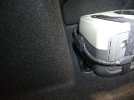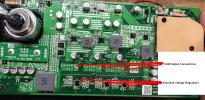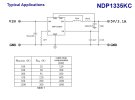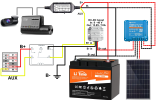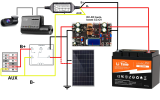EricSan
Member
- Joined
- Dec 28, 2023
- Messages
- 42
- Reaction score
- 14
- Location
- Central PA
- Country
- United States
- Dash Cam
- Viofo 139A Pro 2-ch w/ EcoFlow River 2 parking battery
I've given up on the idea of an auto-switching relay because the camera just doesn't like any kind of power interruption and the EcoFlow won't output power until it senses a load, which causes an even longer power interruption. So, I went with the minimalist solution that GPak posted earlier in this thread. The EcoFlow is charged directly from the 12v utility output when the ignition is on, the EcoFlow directly powers the camera via USB, and the final USB plug also goes to the 12 utility outlet in the car with the USB adapter as the park/drive mode trigger. If the temps are outside of the operating range of the EcoFlow, I can just move the USB cord from the EcoFlow to the 12V utility outlet adapter to power the camera. In the image below, the wires are soldered together and covered with heat shrink. The resulting bundle is held out of the way with velcro strap that sticks to the trunk liner. Maybe I'll pick up a 90 degree USB adapter plug to keep the wire more out of the way.
I'm a little disappointed not to have the auto switching relay, but happy to have a nice large battery for parking mode recording!

I'm a little disappointed not to have the auto switching relay, but happy to have a nice large battery for parking mode recording!

Last edited:

